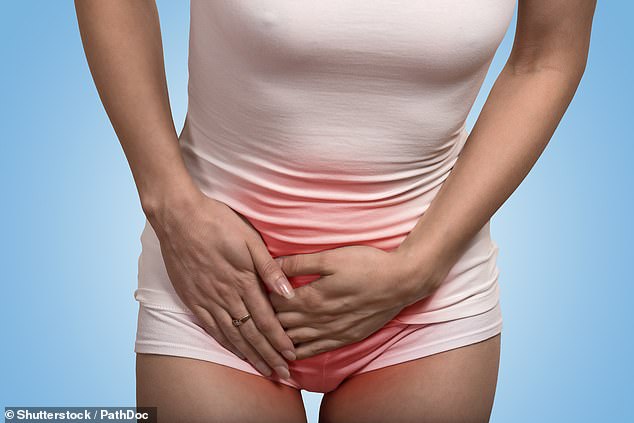Experts discover OLIVE OIL could help fight common intimate infection that affects a third of women
A type of fatty acid found in olive oil could provide the answer to bacterial vaginosis (BV), a condition that affects around 10 million women in the UK.
The infection can cause a burning sensation and itching and is the most common reason for abnormal discharge.
It may also increase the risk of sexually transmitted diseases such as chlamydia and gonorrhea, because it reduces women’s resistance to other pathogens.
Although BV can be treated with antibiotics, it often recurs. BV is caused by an imbalance of naturally occurring microbes.
Researchers from the Broad Institute of MIT and Harvard have now discovered that oleic acid, a long-chain fatty acid found in abundance in olive oil, may help fight the infection.
Researchers from the Broad Institute of MIT and Harvard found that oleic acid, found in abundance in olive oil, can restore a healthy balance of vaginal microbes in a laboratory model of BV

According to the NHS, unusual discharge with a strong fishy smell and a change in the colour and consistency of your discharge, such as grey-white and thin and watery, are common signs of bacterial vaginosis (BV).
The findings, published in the journal Celldemonstrate that oleic acid and several other long-chain fatty acids may have antimicrobial properties.
The fatty acids may inhibit the growth of harmful vaginal microbes and promote the growth of other species associated with a healthier genital tract.
According to researchers, treatments that promote this balance of microbes could be used to prevent repeated infections in women.
According to the NHS, unusual discharge with a strong fishy smell and a change in colour and consistency (e.g. greyish white, thin and watery) are common symptoms of BV.
The infection, which affects about 29 percent of women worldwide, is not considered a sexually transmitted disease, but can be caused by sex.
The condition is usually treated with antibiotics in the form of tablets, gels or creams.
But this puts a certain type of vaginal bacteria, Lactobacillus iners, into overdrive, creating an environment where BV is more likely to return.
“Current treatments work about as well as a coin, and that hasn’t changed in the last 40 years of medical practice. So new ways are needed to help patients,” said author Professor Meilin Zhu, an infectious disease physician at Massachusetts General Hospital.
For her research, Prof. Zhu cultured different strains of vaginal bacteria with oleic acid. She found that the fatty acid inhibited the growth of harmful Lactobacillus bacteria, while simultaneously promoting the growth of other, healthier strains.
Oleic acid was also found to effectively inhibit other BV-associated bacteria, including some strains resistant to standard antibiotic treatments.
This indicates that oleic acid may be an effective way to restore a stable, healthy microbiome in the female reproductive tract after BV.
At the Ragon Institute, Doug Kwon, associate professor of medicine at Harvard Medical School and co-senior author of the paper, is working to translate this research into a human clinical trial.
“We believe there are exciting opportunities to translate these findings into lasting changes in the vaginal microbiome to improve the treatment of BV and reduce negative health outcomes for women worldwide,” Kwon said.
